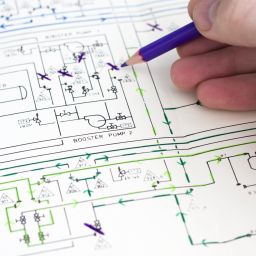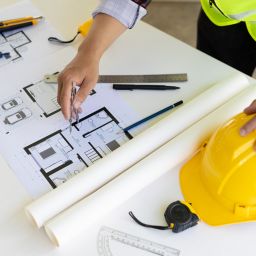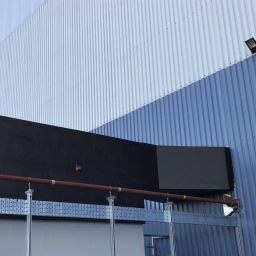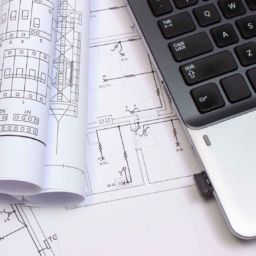Construction estimating in general aswell as mechanical estimating, insulation estimating or plumbing estimating, is one of the most challenging and critical tasks within a contractor. Most of the difficulties and challenges while costing projects arise from grey areas that we as estimators are expected to ‘take a view on’. Construction estimating requires a clear and detailed understanding of the niche and trade you are working in.
Mechanical estimators need to know and understand the meaning of each document and each line item to process and produce accurate take-offs and construction estimations. Experienced mechanical estimators with on-site experience are truly worth their weight in gold.
Mechanical estimating is far more challenging as a mechanical estimator has to have a very good understanding of the systems function, as construction drawings do not depict everything on layouts. The mechanical estimator must also be able to break the job down in the bill of quantities, take-offs as per the client’s pricing schedules.
Even if an M&E estimator has some idea and knowledge of systems, one still has to face a series of challenges that is common in M&E estimation, whether it is ductwork takeoff, plumbing takeoff or any other sort of quantity calculation. Right from the stage of receiving the initial invitation to tender package to final submission, the entire process can be tedious and challenging.
Throughout this article, the term mechanical estimator is interchangeable with any trade such as insulation, electrical, plumbing estimating or duct estimating. Let’s get to it.
Construction Drawings

When a mechanical estimator first gets to review the drawings, the one thing he checks for sure is to see if he has all the drawings relating to the tender. Sometimes when the project is at the initial stage, the drawings may be still provisional design stage and hence unavailable.
Even if they are available, many layouts and details may be missing or incomplete. It is even possible that some sets of drawings remain missing throughout the course of the project. This is one of the common problems faced whilst doing HVAC takeoff and mechanical estimating in general.
Understanding the Scope of Mechanical Estimating
A clearly defined scope to price is a godsend to mechanical estimators. It makes life a lot easier. However, some clients may not be forthcoming with the scope as they want you to figure it out for yourself to test your competency or may even be hoping that you miss some details out, and get you to sign for the contract stating all has been allowed. This mistake can be costly.
Although there’s not always a sinister motive behind these kinds of things happening, they do happen nonetheless, unfortunately. Understanding the scope of work is very important. When the scope is in doubt, the estimator will have to start issuing RFI’s left right and centre or even worse just assuming things because they are short on time. A good client should clarify the scope if asked, but even after that, if the mechanical estimator has any doubt, it must be clarified immediately with RFI.
Sometimes the client may give a general scope of work at ITT, but may start adding more scope as the tender progresses. These things are usually not done on purpose, but they can be irritating to the estimator. Nevertheless, the estimator needs to get it right for themselves and their company.
Project Data:
You can never have enough data about the job. Programmes, equipment schedules even maps depicting the access and egress from the site. The more the better. It can be filtered out if needs be. Having said that I think I should qualify that previous statement by saying that you can never have enough relevant data about a job.
Being sent all the groundwork drawings along with every other trade on the job is not helpful and usually adds more time to the tender for the mechanical estimator. Common sense should prevail but that’s the problem with common sense, it’s not too common!
Making Uneducated assumptions

It is possible that the drawings provided may not have proper details or any specifications. Sometimes the client can be of no help, and the mechanical estimator has to make some assumptions, but making accurate assumptions is an art that can only be acquired with experience. You need to have a basic idea and knowledge of the trade and application in question. Only, in that case, you can make a proper assumption.
Some form of onsite experience, even if only a few days spent in the field watching the fitters do their job is in my opinion, essential and should be offered to junior estimators. It will pay dividends over the long haul. Having access to fitters to chat to by phone to give labour times can be very handy when needing to put some costs together on equipment or materials that are not in the mechanical estimating software.
Not Clarifying things with the client
It is always a good practice to clarify any doubts the mechanical estimator may have. Clear out all confusion before making any assumptions. This way, the client has an idea of what the mechanical estimator is proposing and what they intend to apply. Mechanical estimators must never hesitate to clarify doubts. It is a good practice, something that we follow diligently, here at Chase Estimating service.
Inaccurate Quantity Takeoff leading to inaccurate Bill of Quantities
Accuracy in mechanical takeoff is very important to creating a reliable bill of quantities to price from. Irregularities during the quantity takeoff may result in losses to the contractor or may cause to lose the bid, depending on the context of the inaccuracy. So it is the mechanical estimator‘s job to be careful about their task and ask their peers to review their work to check if anything has been missed.
Time Constraint
We all know our clients want their tenders back ‘yesterday’, but underestimating the complexities of a project because of rushing to finish is a recipe for disaster. Every project comes with a deadline and its rarely ever long enough to arrive at a mechanical estimate without being rushed.
It is critical to manage the time you have well and ask for deadline extensions well ahead of the return date. Good clients will understand if you have a genuine reason. Bad clients will throw a hissy fit and threaten to kick you out of the race.
What can help you manage your mechanical estimating better?
A faster turnaround on each project means more jobs to bid on and more business. By moving to the cloud you can access your data from anywhere in the world, so there’s no need to carry physical files when are offline and visiting the site.
Cloud collaboration allows teams to work on the same project simultaneously and monitor each other’s progress easily. It is especially useful when your business grows and you have multiple branches. We use Google Drive here at Chase Estimating and it helps us keep all our files and folders all in one place, always accessible.
Mechanical Estimating Software
Decent mechanical Estimating software gathers all construction costs (labour, materials, prelims, etc) and automates the calculations to save time, reduce human error, and ultimately, provide more accurate mechanical estimates.
In Conclusion.
A sound mechanical estimate is a foundation for the success of a project. If it’s not priced up right at the start, you won’t see profit at the end. It is critical to face up to these challenges and set up standard operating procedures that can give your mechanical estimators the best chance of succeeding.
Alternatively, you can leave it all to us at Chase Estimating. We have years of experience as a construction estimating service and our clients love what we do. Be it insulation estimating, plumbing estimating, HVAC takeoff, ductwork takeoff etc we can do all the mechanical estimating you require.
Contact us today or fill the form in below to find out more about how we can help you and your business submit more and win more tenders.
















